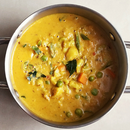The Ultimate Guide to a Low-Calorie Indian Vegetarian Diet Plan
- May 21, 2023
- 2 min read

Maintaining a healthy lifestyle doesn't mean compromising on taste, especially when it comes to Indian cuisine. With its vibrant flavors and rich heritage, Indian vegetarian food offers a wide array of options for those looking to follow a low-calorie diet. In this blog post, we'll present you with an ultimate guide to a low-calorie Indian vegetarian diet plan, packed with nutritious ingredients and delicious recipes that will help you stay on track towards your fitness goals.
Understanding Calorie Counting:
Before diving into the diet plan, it's important to have a basic understanding of calorie counting. The concept is simple: calories are a measure of energy, and consuming more calories than your body needs can lead to weight gain. By creating a calorie deficit, where you consume fewer calories than you burn, you can effectively lose weight.
Designing the Low-Calorie Indian Vegetarian Diet Plan:
1. Breakfast Options:
Protein-packed Moong Dal Chilla (Cheela) with a side of mint chutney.
Nutritious Vegetable Upma made with semolina, vermicide or millets loaded with colorful veggies.
Wholesome Masala Oats with a mix of spices, vegetables, and herbs.
Millet dosa/uttapam with peanut chutney
Kuzhipaniyaram with kara chutney
2. Mid-Morning Snack:
A bowl of mixed fruits or a handful of nuts for a healthy dose of vitamins and minerals.
3. Lunch Ideas:
Light and flavorful Vegetable Salad with a variety of veggies, dressed with lemon juice or low-fat yogurt.
Protein-rich Dal (lentils) or Rajma (kidney beans) served with a small portion of brown rice or whole wheat roti.
Stir-fried Vegetables with tofu or paneer (cottage cheese) for a satisfying meal.
4. Evening Snack:
Satisfy your cravings with a cup of homemade Masala Chai (tea) without sugar or a small portion of air-popped popcorn.
5. Dinner Choices:
Wholesome and filling Vegetable Soup made with a variety of seasonal veggies.
Nourishing Methi (fenugreek) Paratha with a side of low-fat yogurt and a vegetable curry.
6. Bedtime Snack:
A cup of warm Turmeric Milk or a small serving of Greek yogurt to aid digestion and promote a restful sleep.
Tips for Success:
Stay hydrated throughout the day by drinking an adequate amount of water.
Include a variety of colorful vegetables and fruits to maximize nutritional intake.
Opt for whole grains like brown rice, whole wheat, and oats over refined carbohydrates.
Minimize the use of oil and opt for healthier cooking methods such as baking, steaming, or grilling.
Practice portion control and mindful eating to avoid overeating.
Embarking on a low-calorie Indian vegetarian diet plan doesn't mean compromising on taste or depriving yourself of flavorful meals. With careful planning and the right choice of ingredients, you can enjoy a diverse range of nutritious and low-calorie options while staying true to your vegetarian lifestyle. Remember to consult a healthcare professional or a registered dietitian before starting any new diet plan to ensure it aligns with your individual needs and goals. Embrace the deliciousness of Indian vegetarian cuisine and embark on your journey towards a healthier you!
Disclaimer: This blog post is for informational purposes only and should not replace professional medical advice.

























Comments